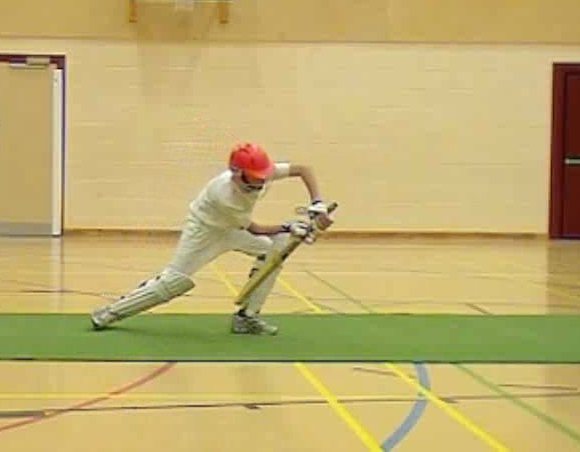How to Improve Footwork in Cricket

Have you been struggling to move your feet against the cricket ball? It can certainly get a bit difficult sometimes, especially when you are playing under different conditions than you have been brought up into.
For example, if you have been trained to play the pacers well on quick pitches, it will not be easy for you to tackle things on a slow turner. You have to be fully equipped with all the shots in the book in order to adjust on different wickets.
For that purpose, the most important thing is to have a good footwork. If you are technically strong, no bowler on earth will be able to trouble you at all, no matter what the conditions are. Once you get used to the pace of the wicket, you just have to make a few adjustments to score runs.
Any batsman can get out without scoring much runs, but it is important that you don’t gift the wicket to the bowler.
Instructions
-
1
Consider yourself the best
Whenever you go out to bat, consider yourself as the greatest batsman of all. Don’t allow the opposition to get a feeling that you are scared of facing a particular bowler. -
2
Stay fully focussed
Cricket is all about focussing on every single detail. Therefore, don’t bother about what the wicketkeeper or any other fielder has to say about you. Simply focus on batting and scoring as many runs as possible for your team. -
3
Watch the ball out of the hands of the bowler
Regardless of the fact that you are facing a pacer or spinner, it is important to watch the ball closely coming out of his hands. Once you have done these basics right, you can adjust your footwork according to the situation. -
4
Take a few deliveries to settle in
Although you can judge the nature of the pitch by just looking at it, it is important to play a couple of deliveries to get used to the pace. -
5
Against a swinging ball
If the ball is swinging, always bat with a low back-lift. Try to cover the line of the ball and you should be aware of your off stump, so that you can shoulder arms easily. Keep the bat and pad close together. There should be no gap between them otherwise the bowler will definitely get you out with an in-dipper.
If the bowler is sharp, stand deep in the crease, so that you get time to read the swing. If he does not have much pace, stay out of the crease and move your front foot out of the off stump in order to avoid getting dismissed Leg Before Wicket. -
6
Against a bouncing ball
If there is bounce in the wicket, you will definitely be peppered with some short stuff. To tackle such deliveries, keep a high back-lift. There is lesser chance of getting out lbw, so you can always stay deep in the crease under such circumstances.
It will be better to play off the back foot on such a pitch, as you will have to score most of the runs square of the wicket. Since there will be plenty of short stuff, you will get the opportunity of pulling, hooking and cutting the ball. -
7
Against a spinning ball
Sometimes, there are a few cracks on the pitch, which allow the spinners to dominate the proceedings. However, you can always play spin well by moving your feet properly.
Always reach the pitch of the delivery and don’t allow it to spin much. This will force the bowler to change his length, which will eventually give you an opportunity of scoring runs. Once again, it will be important to move the pat and pad together, so that the bowler doesn’t get a chance to sneak through. -
8
On a slow pitch
Batsmen always like the ball coming onto the bat nicely, but they have to tackle with slow decks as well. In that case, always play as late as possible. Do not try to reach the ball and allow it to come towards you. It is recommended no to play a sweep shot under such circumstances.
Stand deep in the crease and try to manoeuvre the ball off the back foot in order to find the gaps. -
9
On a two-paced wicket
Sometimes, you don’t really have a clue of how the ball will behave after pitching. Some might zip through whereas others hold back. While batting under such circumstances, it is ideal to come half forward to play your shots. Stand deep in the crease and don’t play premeditated strokes such as the scoop or sweep.


